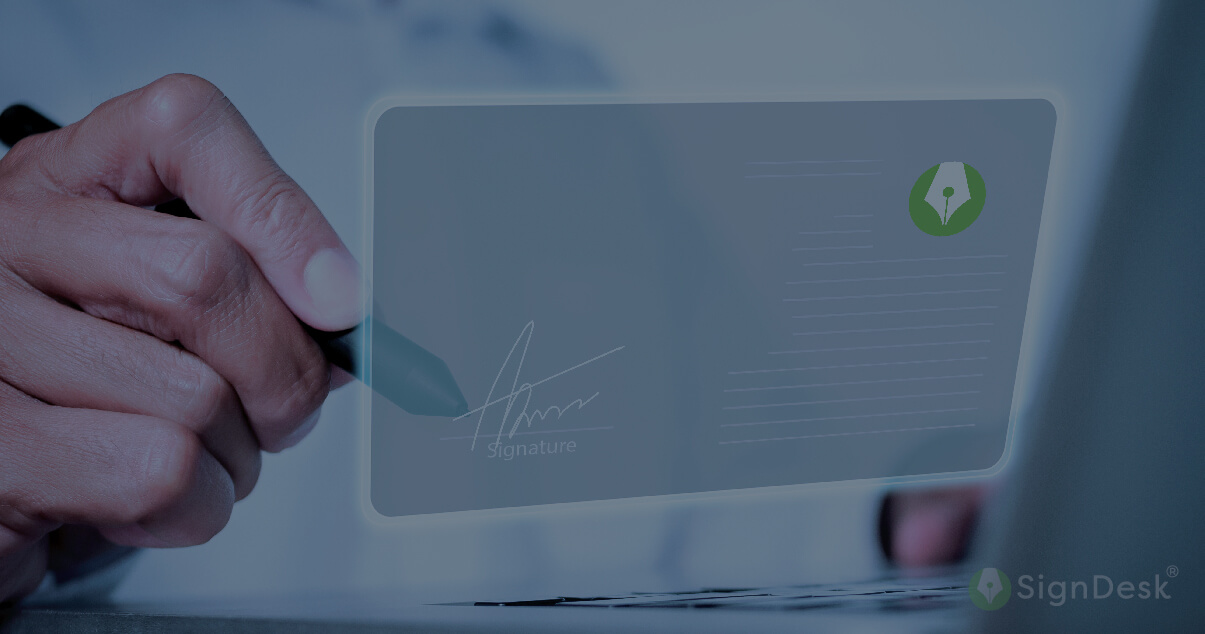A Glance at Signature Throughout the History
Signatures have been integral to human history in expressing their identity and consent for millennia. They serve as a person’s proof of identity and intent through their handwriting for authentication. But the signature meaning is more than just handwriting; it embodies an individual’s unique personality and carries significant legal weight. But they have not always been limited to a person’s name. Signatures include symbols, seals, and even fingerprints. Symbols, unique marks, or emblems were used in various cultures to denote identity and approval. Seals, such as those pressed into wax or clay, were common for authenticating official documents. Fingerprints have been used for centuries to provide secure and personal identification, particularly in regions with low literacy.
The form of these signatures has evolved significantly over time. The way we sign our names is constantly changing. As we transition from paper documents to digital record-keeping, encryption protocols and fillable PDFs replace traditional wet, ink-based signatures. The handwritten signature may soon become obsolete, like wax seals, which have been the standard of authorization for centuries. At present, digital signatures are becoming the expected standard for signing documents.
In the digital era, signing documents is an everyday task, mostly done electronically, to keep up with the pace of the competitive business world. However, reaching this point of digitally signing documents has been a very long journey. The history of the signature is far more fascinating than one might expect. Understanding the signature meaning and its journey from quill to stylus is worth exploring.
The Birth of Signature
The concept of signature dates back to ancient civilizations, where marks and symbols signify identity and intention. The primary purpose of a signature has always been to verify the signer’s identity and to indicate their approval or consent.
Ancient Scribe
The inception of writing systems can be traced back to Mesopotamia and Egypt. Around 3000 BC, the Sumerians and Egyptians initiated using pictographs and symbols for communication. The earliest documented form of a signature can be traced back to Sumerian clay tablets, marking the birth of the first signature. Individuals used cylindrical seals to imprint their signatures onto wet clay. Over time, the Sumerians transitioned from pictographs to cuneiform writing, employing it in business transactions.
The Invention of the Alphabet:
Both writing and language held significant importance in Greek and Roman civilizations. The Phoenicians invented the first alphabet, comprising 22 consonants and no vowels, which was embraced by the Greeks around 1200 BC. It transformed into the Latin alphabet within six centuries, which persists today. While signatures were utilized by Romans, emperors commonly employed signet rings to imprint wax seals on documents for certification. These seals symbolized personal status, with designs typically exclusive to signet rings.
Seals:
During the Middle Ages, wax seals became commonplace in written communication. Various conventions were observed, including using the oval “vesica” shape reserved for women and clergy. Seals symbolized personal status, often unique to signet rings. Seals evolved into more intricate designs to prevent replication, allowing for sealing on both sides of the wax.
Earliest Known Signature:
In 1069, the world witnessed a significant event involving a document signed in the Latin alphabet. Spanish military leader Rodrigo Diaz, “El Cid,” was the first to employ a signature as the traditional method. Diaz signed a donation charter to the Cathedral of Valencia, marking a pivotal moment in the history of signature.
The signing of the Magna Carta in 1215 stands as a significant example, underscoring the importance of signatures. English barons, compelling King John’s agreement, signed this document, which outlined a charter of rights enshrined in the Magna Carta.
Evolution of Handwritten Signature:
The use of signatures expanded in Europe, and by 1677, their legal significance was established. Due to rising literacy rates and the prevalence of wax seal forgery, signatures became a more reliable means of authentication, confirming the presence of individuals at a specific moment. In 1677, the English Parliament enacted the Statute of Frauds, mandating that wills, contracts, and grants must be written and signed to prevent fraud.
Many significant treaties featured personal signatures, including the Declaration of Independence. American revolutionary leader and President of the Continental Congress John Hancock signed the United States Declaration of Independence in 1766 to signify a binding contract. Interestingly, while the Declaration is famously associated with July 4th, it was actually signed over several weeks. This contrasts sharply with today’s eSignatures, which can be eSigned globally instantly.
First Electronic Signature:
Electric tools were invented in the 19th century with the invention of electricity. The first notable instance of using something other than pen, paper, or wax seal to sign occurred in 1869 with the case of Howley v. Whipple in New Hampshire, USA. This case marked the first time a signature was provided electronically via telegraph to authorize a document, making it the earliest recorded instance of an electronic signature in the US.
By the 1980s, technology was rapidly transforming the role of signatures. The advent of the fax machine enabled contracts to be scanned and transmitted electronically, prompting legislative changes in both the United States and the United Kingdom to accommodate this shift. Additionally, the Hellschreiber, invented by Rudolf Hell, enabled data transmission over long distances using fax technology. Herbert E. Ives later developed the Color Facsimile, and the 21st century saw the introduction of 3D Fax for scanning and transmitting three-dimensional data. Despite its many evolutions, fax technology remained prevalent until the mid-2000s and continues to be used in various contexts today.
The Rise of Electronic Signatures
Technology advanced throughout the late 20th century. In 1976, inspired by the advent of the Internet, Diffie and Hellman proposed the concept of the digital signature. Shortly thereafter, Rivest, Shamir, and Adleman developed an early version using their RSA algorithm. This innovation soon reached the average consumer with the release of Lotus Notes 1.0, which featured digital signatures.
In 1999, the US and Ireland utilized eSignatures in a joint communique, highlighting the importance of promoting electronic commerce. At the turn of the millennium, eSignature became even more accessible with its integration into PDF features. Over the past 20 years, eSignature technology has become increasingly sophisticated and secure. Building on the RSA algorithm, which introduced one-to-one public cryptography, the Public Key Infrastructure (PKI) was developed. This marked the beginning of modern eSignatures, which combine public cryptography with encryptions and hash methods, enhancing security and reliability in digital transactions.
Subsequently, President Clinton enacted the ESIGN Act in 2000, granting digital signatures the same legal standing as handwritten ones. The Information Technology Act of 2000 in India includes provisions for using digital signatures on electronically submitted documents to ensure their security and authenticity. This method provides a secure and reliable way to submit documents electronically.
What is Signature? – Signature Meaning in Legal Terms
The term “Signature” is borrowed from Middle French “signature” or Medieval Latin “signātūra.” A signature is a mark or sign made by an individual on an instrument or document to signify intent, approval, acceptance, or obligation. It is proof of generating adequate evidence showing that an individual has declared a document as their own, and if the document is presented in court, it will be the same.
A signature is commonly understood to mean signing a written document by hand. However, a signature must not be handwritten to be legally valid; it can be typewritten, engraved, stamped, or electronically signed. The primary purpose of a signature is to authenticate a document, provide notice of its origin, and legally bind the signer to the document’s provisions.
Legally, a signature is more than just a name written on paper in the signatory’s handwriting. Whether a signature contains a visible name, a symbol, or a logical alteration of information content, the true meaning of a signature is not in the process but in its role as evidence. Therefore, the answer to “What is signature?” can be encapsulated in a single word – “evidence.”
Types of Signatures
There are various types of signatures throughout the history of signatures. Over the centuries, various signatures have emerged, each adapting to their time’s cultural, technological, and legal contexts. From traditional handwritten signatures to modern electronic ones, signatures’ evolution reflects the changing landscape of how we verify identity and intent. Here are some of the key types of signatures:
- Wet Signature: Wet signatures are the traditional way of signing a document with pen and ink. They are commonly used for signing checks, autographing books, and sealing greeting cards. They are also widely used for legal documents like wills, deeds, and official forms.
- Electronic Signature (eSignature): An electronic signature is a general term for any electronic means of indicating a person’s intent to agree to the content of a document. eSignatures carry the same legal weight and are ideal for online transactions, such as signing contracts, sales agreements, or HR documents.
- Digital Signature: A digital signature is an electronic version of signing documents online to authenticate the signer’s identity and the integrity of the signed document. It is more secure than eSignatures as digital signatures include cryptographic algorithms and encryptions for verification. They reduce the risk of forgery breaches and are commonly used for sensitive documents.
- Biometric Signature: Biometric signatures are electronic signatures that use an individual’s unique biological characteristics, such as fingerprints or iris scans, to authenticate the signer’s identity. Biometric signatures are highly secure and often used in high-risk or sensitive transactions, such as financial transactions or access to sensitive data.
- Clickwrap Signature: In the clickwrap signature, the user explicitly agrees to the terms and conditions of a contract or agreement by clicking on the “I agree” button or checkbox. Clickwrap signatures are commonly used in online transactions, software installations, and terms of service agreements.
What are the Different Types of eSignatures?
SignDesk offers a variety of eSignatures, allowing firms to select the type that best suits their needs and manage their signing procedures online. Here are the different types of eSignatures available:
- OTP-based eSignature – In this eSigning process, an OTP is sent to the signer via phone or email, which is then entered to complete the eSigning process.
- Aadhaar-based eSignature – The Aadhaar-based eSigning process is more secure as it uses double authentication. When the signer initiates eSigning, their information is retrieved from the UIDAI database, and an OTP is sent to their Aadhaar-linked mobile number. The signer enters the OTP to eSign the document.
- Digital Signatures or DSC-based Signatures – Only entities registered with the Comptroller of Certifying Authorities (CCA) may offer digital signature services. Registered entities, known as Certifying Authorities (CAs), provide businesses with unique Digital Signature Certificates (DSC) to generate public and private keys for encrypting and decrypting documents.
- Video-based Signatures – This eSignature creates video-based evidence of consent. The signer appears in a video confirming and agreeing to the document’s provisions. Video eSignatures offer a simple, remote authentication solution, providing a live, virtual signing method.
How Does Electronic Signature Work?
Creating eSignatures can be done through various methods. Here’s the simplified version of how you can create an e Signature :
- Step 1- Log in to the SignDesk eSign portal
- Step 2 – Upload the document onto the eSigning portal or use templates to draft a new document
- Step 3 – Invite the required signers by sending them an email or SMS invitation
- Step 4 – The parties accepting the invitation can sign the document electronically using the OTP sent to their registered mobile number
- Step 5 – Once authenticated, SignDesk will share the eSigned copy with all parties involved
After signing, the electronic document is stored securely in a centralized repository and can be downloaded by all signers and stakeholders.
Benefits of Using Electronic Signature
Traditional signatures are time-consuming, requiring physical presence and manual processes that cause delays. Managing physical documents is labor-intensive and error-prone, incurring high costs due to paper, ink, printing, postage, and storage expenses. Security risks are prevalent as traditional signatures are prone to forgery, loss, and damage due to inefficient record-keeping. Additionally, the environmental impact is substantial, with paper usage contributing to deforestation and carbon footprints., inefficiencies in record-keeping.
Addressing these challenges, the SignDesk eSigning tool offers many advantages businesses can benefit from.
- Speed and Scalability – eSignatures significantly expedite the signing process by eliminating the need for physical document exchanges. With eSignatures, documents can be signed online in minutes, accelerating multiple workflows and enabling scalability with bulk eSigning.
- Time and Cost Savings – The transition to electronic signatures results in substantial time and cost savings. Companies reduce operational costs and administrative tasks associated with handling paper documents. critical business areas, enhancing overall efficiency and profitability.
- Enhanced Security – eSignatures offer superior security compared to traditional handwritten signatures. They incorporate advanced encryption algorithms and technologies to protect the integrity and authenticity of documents. Features like audit trails, encryption keys, and multi-factor authentication make it difficult for unauthorized individuals to alter or forge documents, heightening security and credibility.
- Remote Access and Convenience – One of the most significant advantages of eSignatures is their convenience. Signatories can sign documents from anywhere in the world using any internet-enabled device, such as a smartphone, tablet, or computer. This flexibility supports remote work and facilitates global business transactions, eliminating the need for physical presence and making the signing process more accessible and efficient for all parties involved.
- Compliance – eSignatures help organizations comply with various legal and regulatory requirements. They are recognized and legally binding in many countries, supported by laws such as the ESIGN Act in the United States, eIDAS in the European Union, and Information Technology Act of 2000 in India. eSignature solutions often include features that ensure compliance with industry-specific regulations, such as HIPAA for healthcare or GDPR for data protection, providing peace of mind that all signatures meet the necessary legal standards.
Sign Your Documents Digitally with SignDesk’s eSign Tool
The evolution of signatures from ancient to modern electronic signatures highlights the constant change in signature meaning, fueling improved security, efficiency, and convenience. While traditional signatures hold historical significance, electronic signatures offer a modern solution that addresses the limitations of physical signing. With legal recognition, electronic signatures have become the standard for authenticating documents in this digital era.
SignDesk is a leading document automation platform that provides the eSigning tool, Ink.it designed to simplify and streamline eSigning process for businesses and enterprises of any size. SignDesk’s eSign solution offers compliance and ease of signing on a user-friendly interface with highly encrypted security.
Explore how SignDesk can transform your document signing process. Try our eSigning solution today and experience seamless, secure, and compliant eSigning for your business.



